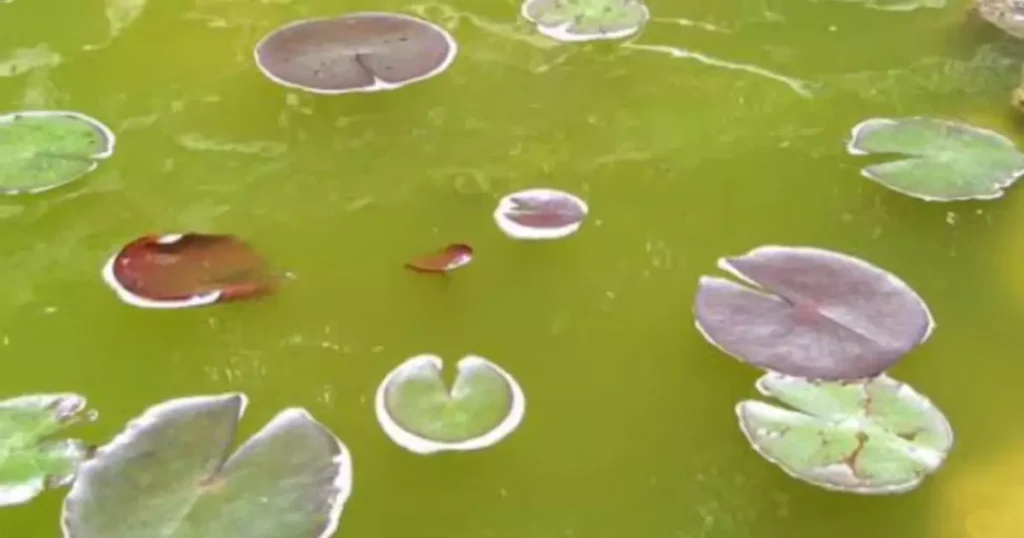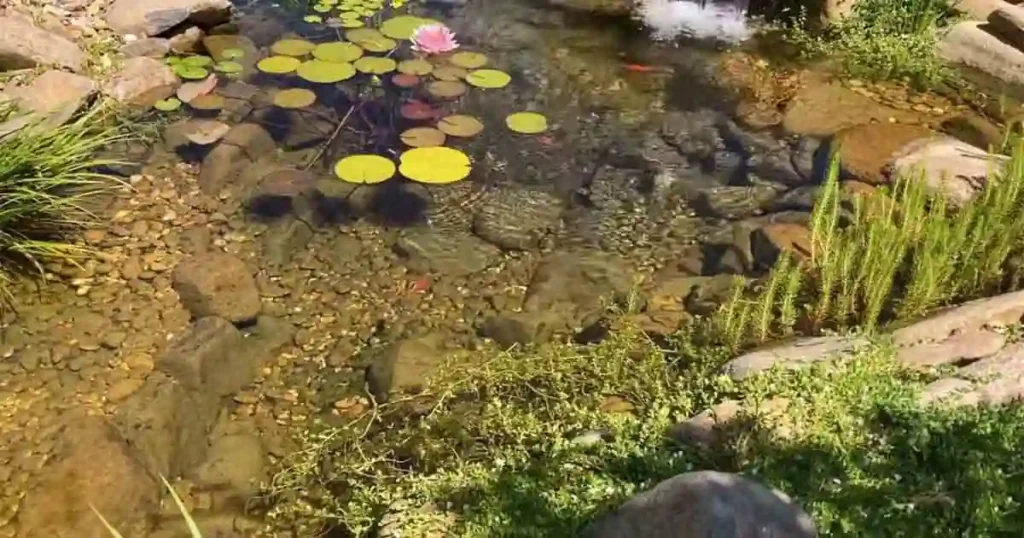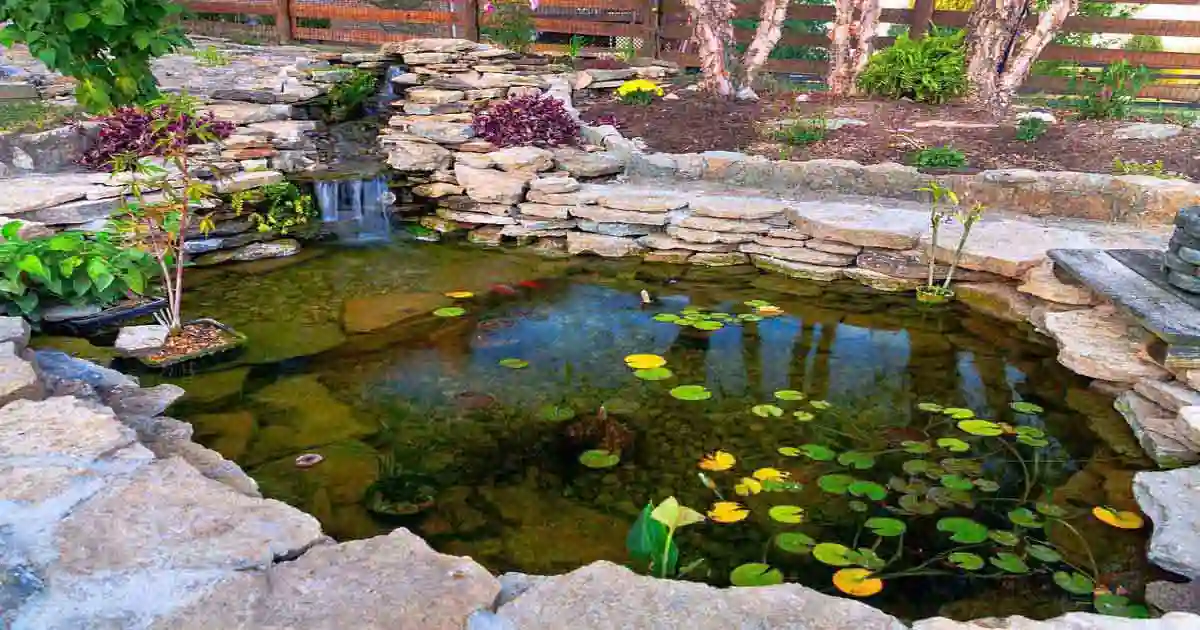The healthy environment of a pond is necessary to both the aquatic life and the visual value. Ultraviolet (UV) light is one of the best methods which keeps water quality and clarity in a pond. The UV light technology quickly became a breakthrough. Through this technology pond owners would soon be taking advantage of it .It would help to tackle key pond problems such as algae overgrowth, waterborne pathogens and poor water clarity.
In this post we will learn about Ultraviolet light for pond algae. How UV lights function, the advantages, different types of UV systems, and their application in pond management.
Understanding the Ultraviolet Light
Ultraviolet light is a kind of electromagnetic radiation. It has a shorter wavelength than visible light and a longer wavelength than x-rays. It can be categorized into three main classes according to their wavelengths. These are UVA, UVB, and UVC. For ponds, UVC is the type used. It destroys or neutralizes microbes and decomposes organic material, like algae.
One of the essential properties of UV light is its capacity to molecularly damage the DNA in living cells. UV clarifiers effectively eliminate excessive algae, bacteria and various microorganisms when pond water is passed through a UV clarifier. The outcome of this procedure is clearing water; however, there is also a decrease in algal blooms and an enhancement of the pond’s ecology. This is significant because it contributes to a healthier aquatic environment, although some may argue about the long-term effects on other organisms present.
How UV lights work in ponds?
UV lights help improve water quality and clarity in pond care. Here’s a closer look at the mechanics:
1. Algae Control
Algae is a most common problem in ponds. It causes green, murky water that blocks sunlight and lowers oxygen levels. UV lights tackle this issue. They emit light that breaks down the DNA of free-floating algae. This renders them incapable of reproducing. Once the algae particles are neutralized, they clump together. The pond’s filter can then remove them. This process reduces green water and restores clarity to the pond in a substantial way.
2. Pathogen Reduction
Ultraviolet light can remove harmful bacteria, viruses, and parasites in the water. It makes a healthier environment for fish and plants. Pathogens such as the ich parasite, which causes fish diseases, can be eliminated when exposed to UV light. This is especially important in fish ponds. An environment free of pathogens enables fish health and prevents the spread of disease.
3. Decomposing Organic Matter
UV light helps some organic compounds like a decayed plant and fish’s waste, in separating in the water. It can also kill both algae and pathogens. This improves the clean water environment in the pond and reduces sludge accumulation at the bottom of the pond. Suggested Benefits of Pond UV Lights

Advantages of UV Lights for Ponds
There are various avails for using UV lights in ponds which includes the ones given below:
1. Enhancing the Clarity of the Water
One of the most obvious benefits of using UV lights is clearer water. The neutralization of algae, especially green suspended ones, clears the water. This allows for a better view of the pond’s aquatic life and features. Crystal-clear water also makes your pond more visually appealing and enhances its natural beauty.
2. Reduced Algae Blooms
The warm weather and abundant sunlight in the summer enables algae blooms to proliferate and quickly take over a pond. Such blooms may rob it of oxygen, which can damage the health of the pond’s fish and other organisms. UV lights limit algae growth by killing the free-floating cells in the water, which prevents the blooms from establishing themselves.
3. Healthier Fish and Plants
UV lights reduce pathogens and harmful microorganisms. This creates a cleaner habitat for fish, aquatic plants and other organisms in your pond. A few diseases that might attack the fishes are prevented and thus maintaining the total biodiversity of the pond. So, healthy, happy fish also help to keep the pond’s ecosystem balanced, by eating excess algae and detritus.
4. Prevention of Sludge Build-Up
UV light helps in breaking down organic waste and decomposing plant material, which prevents sludge formation at the pond bottoms. Clean and oxygenated water can then be easily maintained without having to continually clean the pond.
5. Low Maintenance and Energy Efficiency
UV clarifiers are relatively easy to install and maintain. They require minimal attention. If sized and operated properly, UV units can run continuously, requiring minimal adjustments. Modern UV systems are energy-efficient, offering long-lasting benefits with relatively low operational costs.
6. Decrease Use of Chemicals
UV lights assist in controlling the algae population. They do this without employing harsh chemicals or algaecides. Therefore, they are an eco-friendly alternative for pond maintenance. This reduces the chances of damaging helpful bacterium or plants within your pond.
Choosing the Right UV Light for Your Pond
When choosing a UV light for your pond, consider several factors. They are the size of your pond, the algae or the pathogen and the design of your filter. However, some issues that you should consider while buying a UV clarifier, are presented below.
1. Pond Size and Flow Rate
When selecting a UV system, the greatest factors to consider are the size of the pond and the flow rate of water. There are UV clarifiers which are characterized by a certain GPH (gallons per hour) or LPH (liters per hour) flow range they can support. So you want a UV clarifier. As a rule of thumb, the UV clarifier should not exceed your pond’s filter flow rate. If the water traverses the clarifier too quickly, the UV light exposure will simply be insufficient. So the system would become ineffective. By the same token, however, a large pond would quite easily overwhelm a system configured for a smaller flow.
Picking a UV clarifier certified for a pond larger than yours is a good measure. This provides an additional safety margin for dealing with heavy algae loads or poor water conditions.
2. Type of UV clarifier
There are different types of UV clarifiers available, with varying features and designs. Some common options include:
In-line UV clarifiers:
In-line UV clarifiers are the part of the pond’s filtration system. The water must flow through the unit before being returned to the pool. They are ideal for those who have a pump-driven filtration setup.
Submersible UV Clarifiers:
You put these directly into the pond. Soak in water or place in a filter box. They’re easy to install and are often used in smaller ponds or water gardens.
External UV Clarifiers:
External models are separate units placed outside the pond. The water is pumped through them before being returned to the pond. These are suitable for larger ponds. They are more flexible for maintenance and placement.

3. Wattage and UV bulb lifespan
UV bulb wattage is another factor to take seriously. Higher wattage bulbs are more effective at sterilizing. They work best in large ponds or ponds filled with algae. However, wattage has to be adjusted in relation to the size of the pond and the water velocity.
You do not forget the life span of the UV bulb also. The life span of UV bulbs is approximately 6,000 to 12,000 hours. After that, they lose their effectiveness. In order that your UV clarifier is able to work properly, change the bulb regularly.
Installation and maintenance of UV Lights
Proper installation and maintenance are keys. They will ensure your UV system works well over time. Here are some tips:
1. Proper placement
For maximum efficiency, install UV lights where the water can be exposed for a sufficient time. The placement of the UV unit depends on the type you choose (in-line, submersible, or external). Always follow the manufacturer’s instructions for optimal setup.
2. Regular cleaning
Regularly clean the UV bulb and the quartz sleeve around it. This will ensure maximum light output. Over time, minerals and algae can accumulate on the quartz sleeve. This reduces the UV light’s effectiveness.
3. Bulb replacement
UV bulbs wear down with time, even if they’re still lit. It’s important to replace the UV bulb every 6 to 12 months to maintain water quality.
4. Monitoring and adjustment
Keep an eye on your pond’s water clarity and adjust the UV system if necessary. If you notice signs of algae growth, it indicates that the UV system isn’t performing optimally and may need maintenance or an upgrade.
Conclusion
Ultraviolet lights provide an efficient and low-maintenance solution for most pond problems, such as proliferation of algae, and proliferation of pathogens. Knowing how to work UV clarifiers can help you enhance your pond water. Choose the appropriate system for your pond’s size and requirements. This will ensure a healthy, thriving aquatic environment. Having the proper installation, maintenance, and a touch of patience, UV lights can give a good health and the beauty of your pond.

